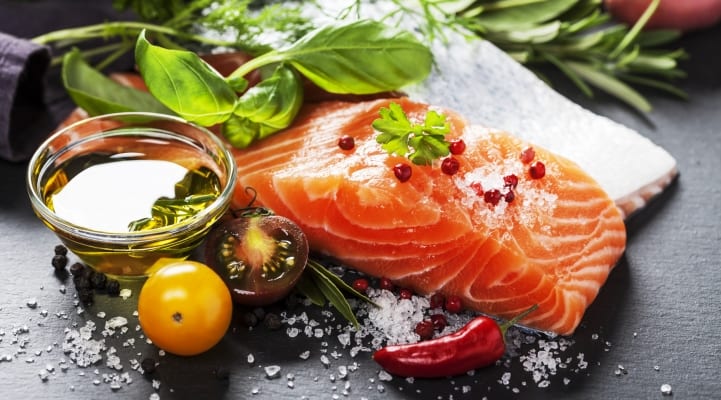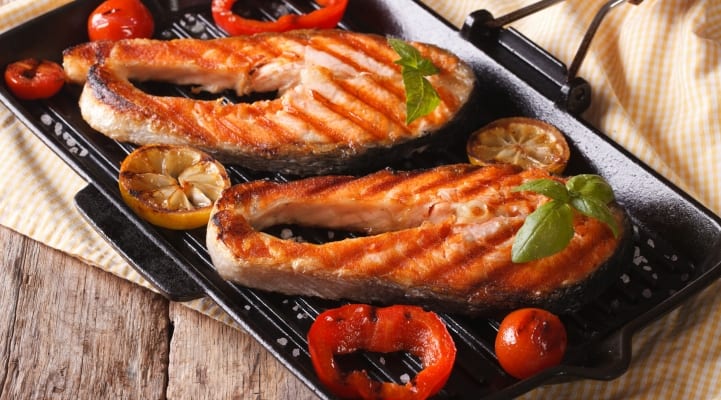Fresh salmon is eaten baked, grilled, smoked or raw, and hardly any other fish comes close to it in the popularity stakes. It’s well known for its great taste and easy digestibility, for being nutritious, and for its simple preparation. And, as well as being a fantastic choice for an exquisite dinner with friends, it’s also great for a time-pressured family meal. Read on and pick up some great tips on preparing fresh salmon.

1. How do you know if salmon is fresh?
Before you get underway preparing your fresh salmon, there are a couple of things you must pay attention to: always check the appearance and colour of the fish before you buy it because this will tell you whether or not the salmon is fresh. Make sure that the salmon doesn’t have any brown spots or show any signs of bruising, and that there are no other signs of any darkening or discolouration. The flesh should be firm, free from fissures and holes, and should have a smooth, shiny appearance. It’s often said that the pinker the salmon the better its quality and taste, but this particular colour difference is only a reflection of the variety of salmon, e.g. Sockeye salmon is a deep red, whereas Coho is more of a pale pink. In this case, simply decide which type you prefer the taste of more. Also, pay attention to how the salmon smells – it shouldn’t smell too fishy, but should have the light ocean aroma that is indicative of fresh quality.
2. Soak the salmon in brine
When you cook fresh salmon a white ‘skin’ is typically produced, but this is very easy to prevent or at least significantly reduce. Simply soak the salmon in a basic salt solution (one soup spoon of salt per cup of cold water) for 10 minutes – it’s that easy!
The salt breaks down some of the muscle fibres on the outer side of the fish so that when you cook the salmon these outer muscles tighten less. Soaking in brine also means that the fish will be much juicier and tastier after cooking, and it prevents the fish becoming too dry should it be cooked a little longer.
3. Don’t remove the skin
Although it isn’t popular with everyone, fish skin acts as a natural barrier between the tender piece of fish and the pan or grill, protecting the salmon from becoming quickly scorched.
However, if you’re using a gentle cooking method, such as poaching, you can remove the skin beforehand, if you wish.
4. Poaching salmon in water
If you like your food low in calories and rich in vitamins, it is best to poach your fresh salmon in simmering water. Due to the comparative gentleness of the poaching process, the salmon will retain its full flavour, remain tender, and its important nutrients will be preserved.
5. Grilling salmon
If you’re a barbeque fan, you certainly don’t have to miss out on great tasting fish. Grilled salmon fillet is particularly juicy and this method of cooking allows its full flavour to truly unfold. Let your creativity run wild: follow the purist route of oiled skin on an oiled grill and seasoned with pepper, or grill your salmon on a plank of cedar wood like our Scandinavians friends do! You simply can’t beat the taste of fresh grilled salmon.

STORAGE
Storing salmon correctly
The most important thing about storing any kind of seafood, including salmon, is to maintain it at the right temperature because fish is extremely temperature-sensitive.
You need to refrigerate salmon in its packaging as soon as possible after purchase. Fresh salmon can be stored in the fridge for one day without any worries. Our tip: it’s definitely worth taking a cool bag with you for transporting your fish home and making sure that the cooling chain remains uninterrupted.
Storing salmon with BioFresh
If you are fortunate enough to own a Liebherr BioFresh refrigerator, storing fresh fish has never been so easy and convenient. The temperature in the BioFresh compartment is maintained at just above 0 °C, which doubles the storage life of the fish.
Storing salmon in the freezer
If you don’t plan to use your salmon immediately, you can keep it frozen for up to six months.
For more information about freezing fresh salmon and how to defrost it, please read our post about Sea Bream, Trout & co.





